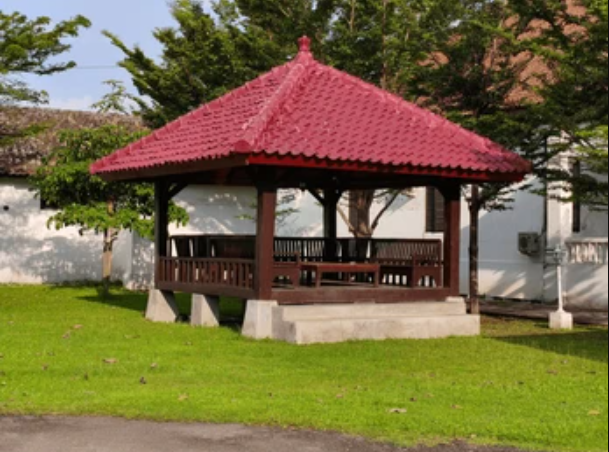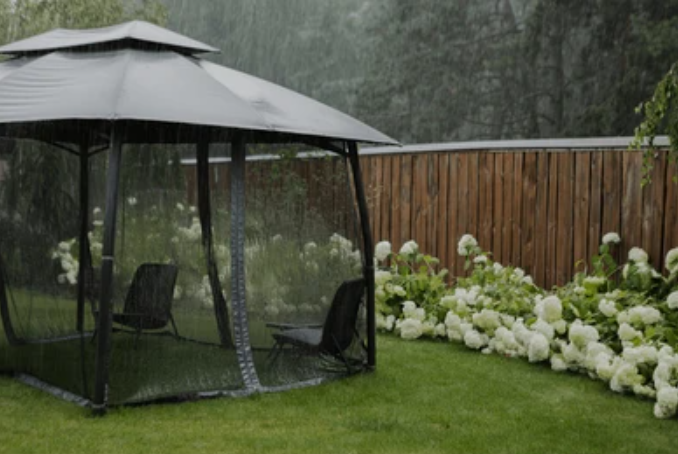A wooden gazebo can turn a plain backyard into a cozy, shady spot for family and friends. In Orlando’s warm climate, a gazebo gives you a cool place to relax, host barbecues, or read a book. Installing a wooden gazebo may seem hard, but with the right steps and tools, you can do it smoothly, even if you’ve never built one before.
This guide shares simple, step-by-step tips for installing a wooden gazebo in your Orlando yard. We’ll cover everything from picking the right spot to keeping your gazebo in great shape under the Florida sun.
Let’s get started!

1. Choose the Right Gazebo Design
Before you start digging holes, pick a gazebo that fits your space and style. Wooden gazebos come in many shapes and sizes:
- Square or octagon: Offers a classic look and plenty of room inside.
- Rectangular: Fits snugly against decks or patios.
- Arched roof or pitched roof: Helps rainwater slide off easily.
When choosing, think about how you’ll use the gazebo. If you plan to add curtains or lights, look for models with solid beams and rafters. Also, check the wood type—cedar and redwood resist rot and bugs better than pine. In Orlando’s humid weather, decay-resistant wood will last longer.
2. Plan Your Installation Site
Picking the best spot in your yard is key:
- Flat ground: A level area keeps the gazebo stable.
- Good drainage: Avoid low spots where water pools after rain.
- Sun and shade: Think about sun angles—morning light may be nice, but afternoon sun can be hot.
- Access: Ensure you can easily transport materials and tools to the site.
Use stakes and string to mark the gazebo’s footprint. Measure twice to be sure the shape and size match your plan. Having a clear layout helps prevent mistakes later.
3. Gather Tools and Materials
Having all the right tools on hand makes the job smooth. Here’s what you’ll need:
- Tools
- Tape measure
- Carpenter’s level
- Post hole digger or power auger
- Circular saw or miter saw
- Drill and bits
- Wrench or socket set
- Hammer and nails
- Safety gear (gloves, goggles)
- Materials
- Precut gazebo kit or lumber (beams, posts, rafters)
- Concrete mix for footings
- Galvanized hardware (brackets, bolts, screws)
- Wood sealant or stain
- Roofing materials (shingles, metal panels, or cedar shakes)
If you buy a kit, check that all pieces are included and undamaged. For custom builds, buy a little extra lumber—cutting mistakes happen!

4. Prepare the Ground and Foundations
Solid foundations keep your gazebo standing strong:
- Dig post holes
- At each corner and along sides, dig holes at least 12–18 inches deep (below frost line) and 12 inches wide.
- At each corner and along sides, dig holes at least 12–18 inches deep (below frost line) and 12 inches wide.
- Pour concrete footings
- Mix concrete per instructions. Fill holes, leaving a few inches at the top for adjustments.
- Mix concrete per instructions. Fill holes, leaving a few inches at the top for adjustments.
- Set post anchors
- While concrete is wet, place metal post anchors level with ground. Let concrete cure for 24–48 hours.
- While concrete is wet, place metal post anchors level with ground. Let concrete cure for 24–48 hours.
In Orlando, soils can shift slightly after heavy rains. Using concrete footings helps prevent posts from moving or sinking.
5. Erecting the Main Posts
With foundations ready, you can stand up the gazebo posts:
- Position each post in its anchor and bolt it down loosely.
- Check for plumb (perfectly vertical) using a level. Adjust before tightening bolts fully.
- Measure diagonals across opposite posts—both distances must match to ensure a square or octagon shape.
Taking time at this stage means fewer headaches later. If posts aren’t straight or square, rafters won’t fit right, and the roof will be uneven.
6. Building the Roof Frame
The roof holds everything together and protects from sun and rain:
- Install rim beams around the top of posts to create a solid frame.
- Lay rafters on rim beams. For an octagon gazebo, each rafter angle is 45°; for a square gazebo, rafters meet at 90°.
- Use hurricane ties and galvanized brackets to secure rafters firmly—this is crucial in Florida’s storm season.
- Add collar ties between rafters to prevent them from spreading outward under load.
Make sure rafters overhang evenly on all sides. This overhang helps direct rainwater away from posts and walls.
7. Applying Roofing Material
Choose a roof type that fits your budget and style:
- Asphalt shingles: Affordable and easy to install.
- Metal panels: Lightweight, long-lasting, and reflect heat—ideal for hot Orlando summers.
- Cedar shakes: Match the wood gazebo look, but cost more and need regular upkeep.
Steps to apply shingles or panels:
- Lay underlayment (roofing felt) on rafters.
- Start at the bottom edge, working up in rows.
- Nail each panel or shingle per manufacturer’s instructions.
- Seal ridges and edges with flashing or ridge caps to keep water out.
Always follow safety rules when working at height. Use a sturdy ladder, wear slip-resistant shoes, and consider a safety harness.
8. Finishing Touches and Details
Once the main structure is done, add these touches for comfort and style:
- Railings or half-walls: Offer safety and a finished look.
- Flooring: Deck boards, pavers, or stamped concrete create a clean surface.
- Lighting: String lights, lanterns, or ceiling fans turn the gazebo into a cozy evening spot.
- Curtains or screens: Block bugs and add privacy.
- Planters or hanging baskets: Bring color and blend the gazebo with your garden.
Painting or staining protects the wood from the sun and rain. In Orlando, reapply sealant every 1–2 years to keep your gazebo looking fresh.

9. Orlando Climate Considerations
Orlando’s weather can be tough on outdoor wood:
- Sun exposure: UV rays can fade wood and break down sealants. Choose UV-resistant stains.
- High humidity: Encourages mold or mildew. Clean the gazebo with a mild bleach solution once a year.
- Rain and storms: Secure all parts tightly and add extra brackets for wind resistance.
Planning for local conditions means fewer repairs and a longer life for your gazebo.
FAQs
1. How long does it take to install a wooden gazebo?
For a small, precut kit, expect 1–3 days with two people working. Custom builds may take a week or more.
2. Do I need a permit to install a gazebo in Orlando?
Most gazebos over 200 square feet require a building permit. Check with Orange County or your homeowners’ association before you start.
3. What type of wood is best for an Orlando gazebo?
Cedar and redwood resist rot and insects. Pressure-treated pine is more affordable but needs extra care and sealant.
4. Can I install a gazebo on a concrete slab?
Yes! Use concrete anchors and skip digging post holes. Make sure the slab is level and strong enough to support the structure.
5. How often should I seal or stain the wood?
Reapply sealant every 1–2 years. If water no longer beads on the surface, it’s time for another coat.
6. What maintenance does a wooden gazebo need?
- Clean lightly with soap and water each season.
- Inspect for loose bolts or nails.
- Trim plants and grass around the base to improve air flow.
7. How do I keep bugs away from my gazebo?
Install screens or curtains. Use bug-repelling plants like lavender or marigolds nearby. Regularly clean to avoid mold and pests.
8. Can I add electricity or plumbing to my gazebo?
Yes—hire a licensed electrician or plumber. Plan wiring and pipes before building so you can hide them under the floor or inside beams.
Conclusion
Installing a wooden gazebo in your Orlando backyard is a great way to add shade, beauty, and value to your home. By choosing the right design, planning your site, and following these simple steps, you can build a strong, attractive gazebo that lasts for years. Remember to use quality materials, secure everything tightly, and protect the wood against Orlando’s sun and rain.
With regular care and a bit of elbow grease, your new gazebo will become the favorite spot for family gatherings, weekend barbecues, or quiet evenings under the stars. Enjoy your outdoor haven!
